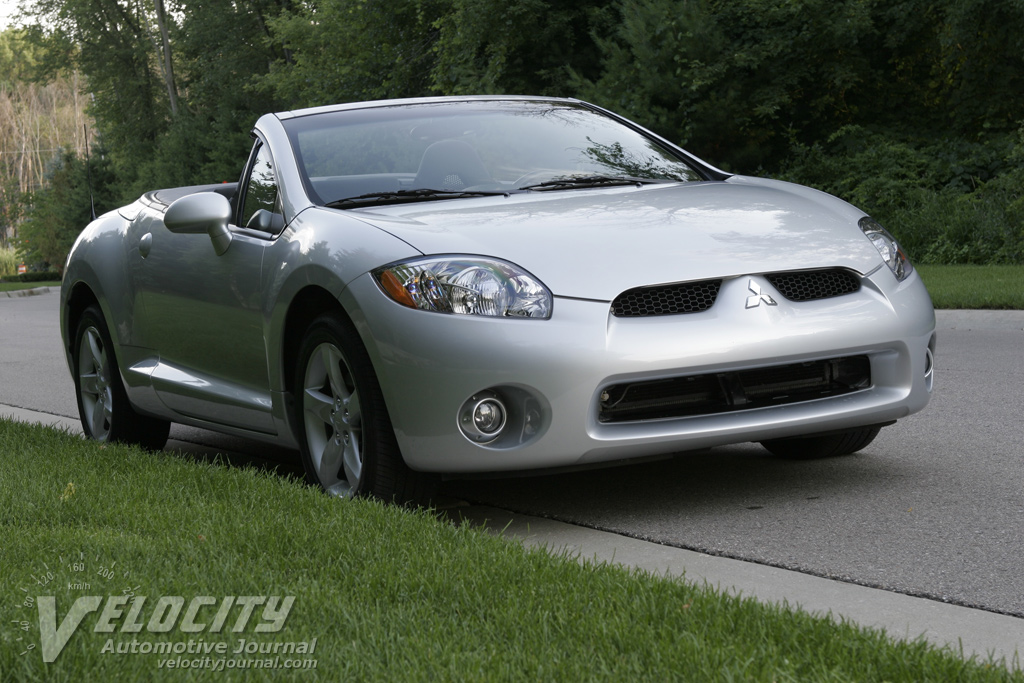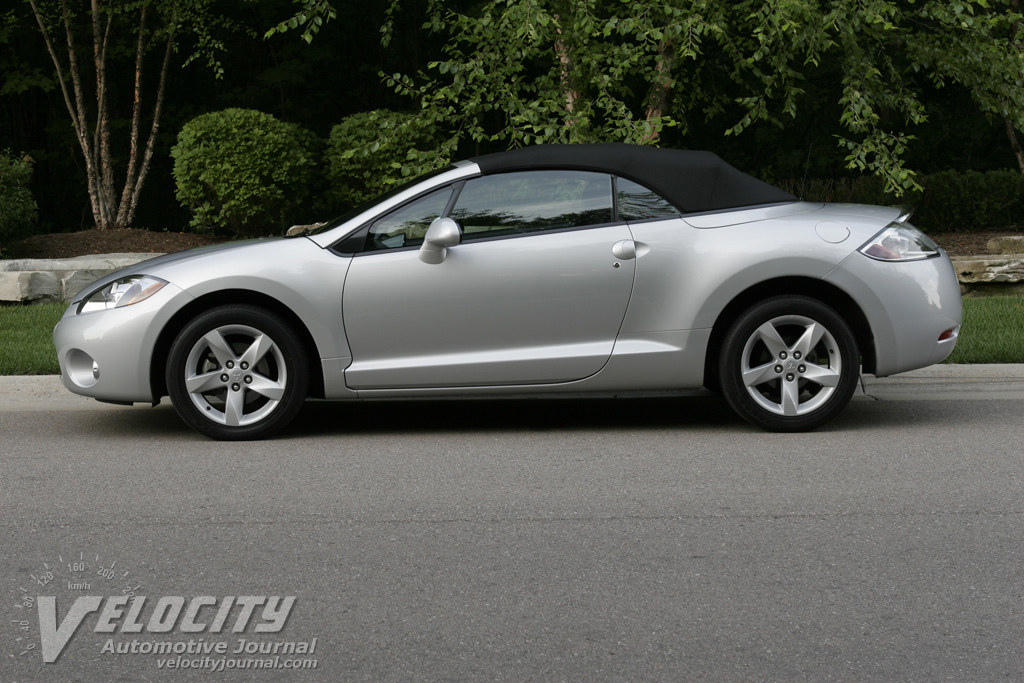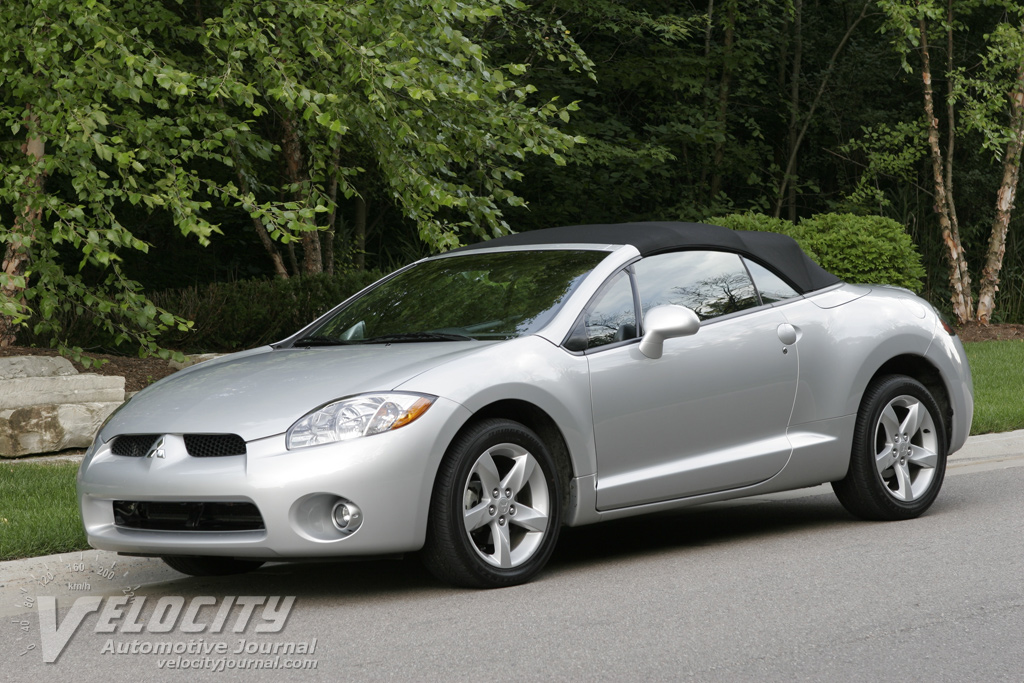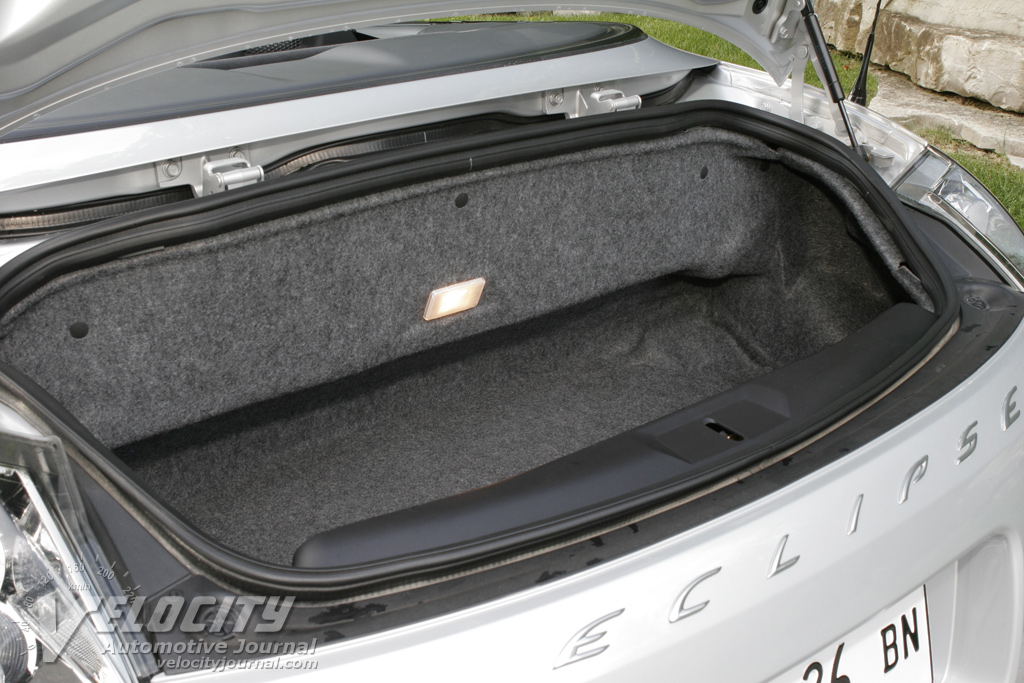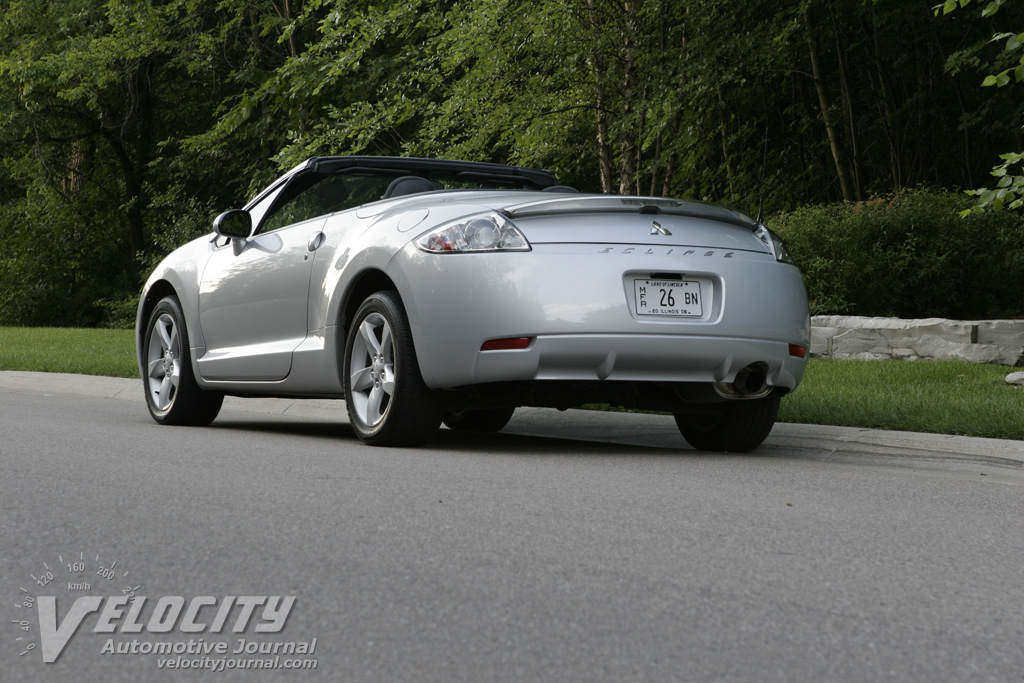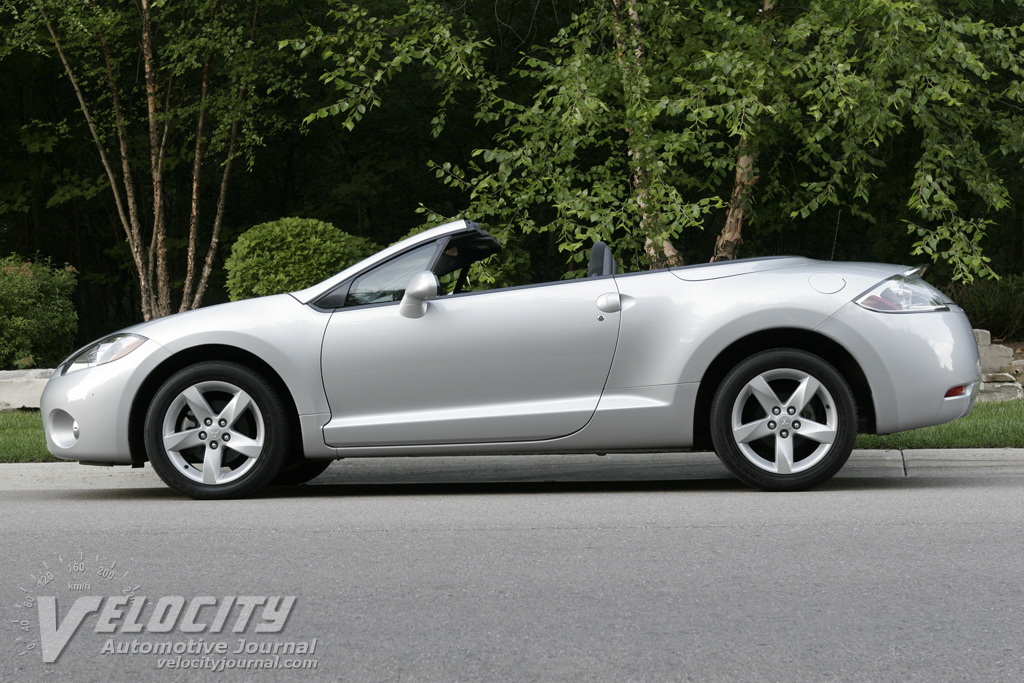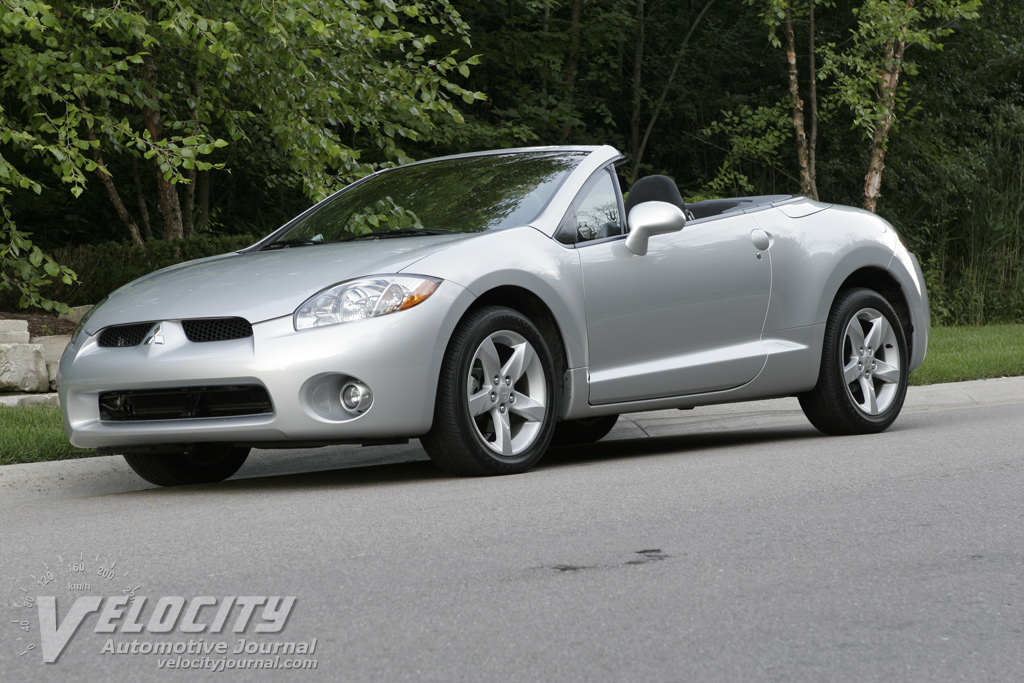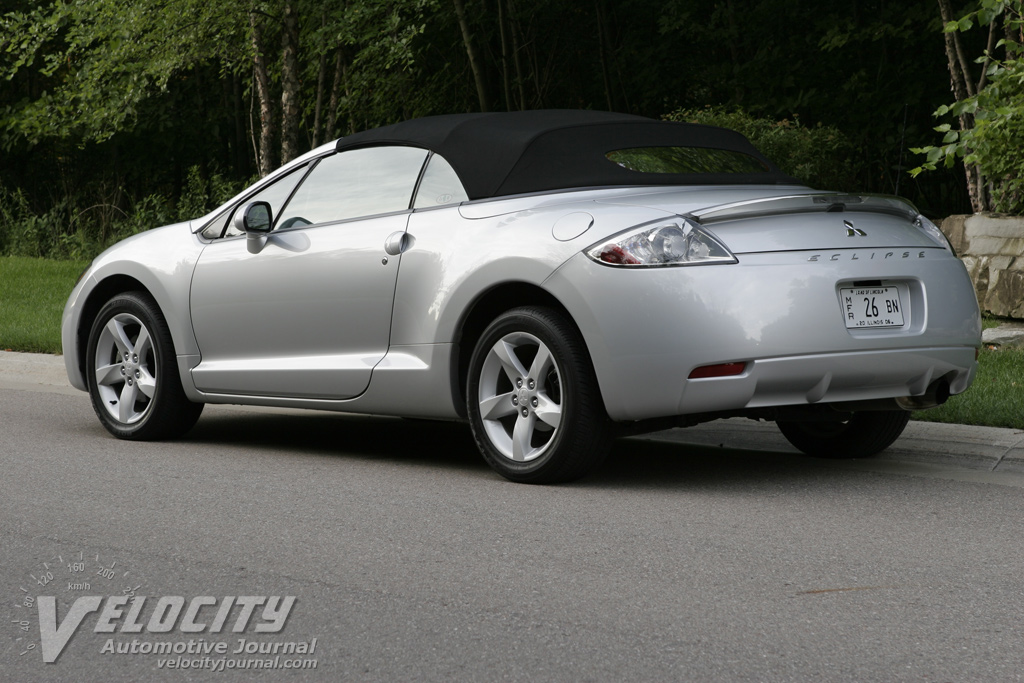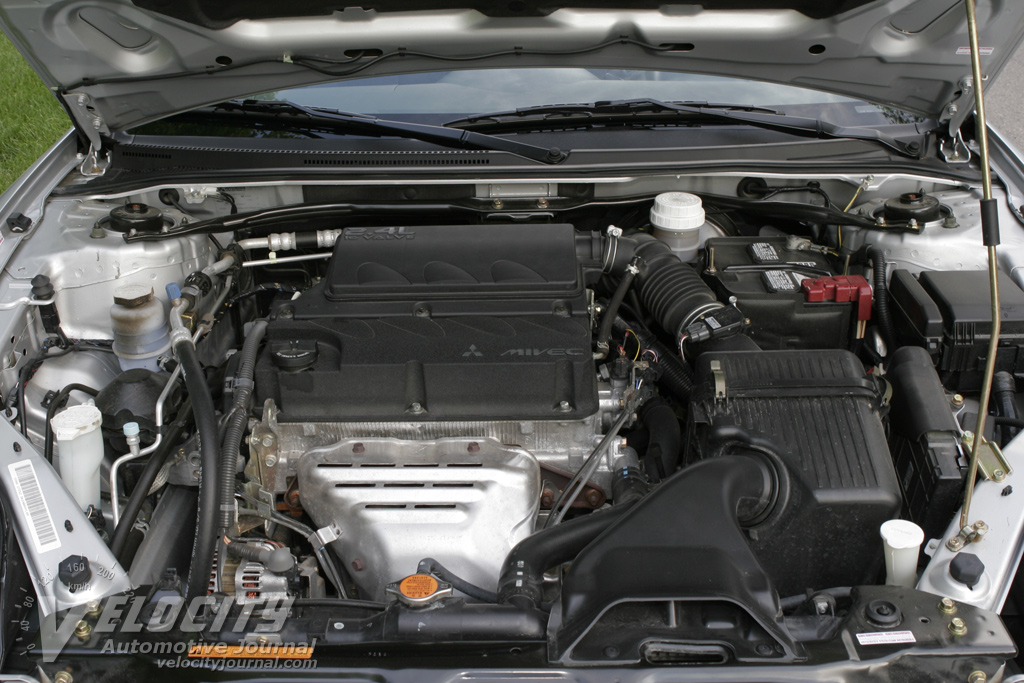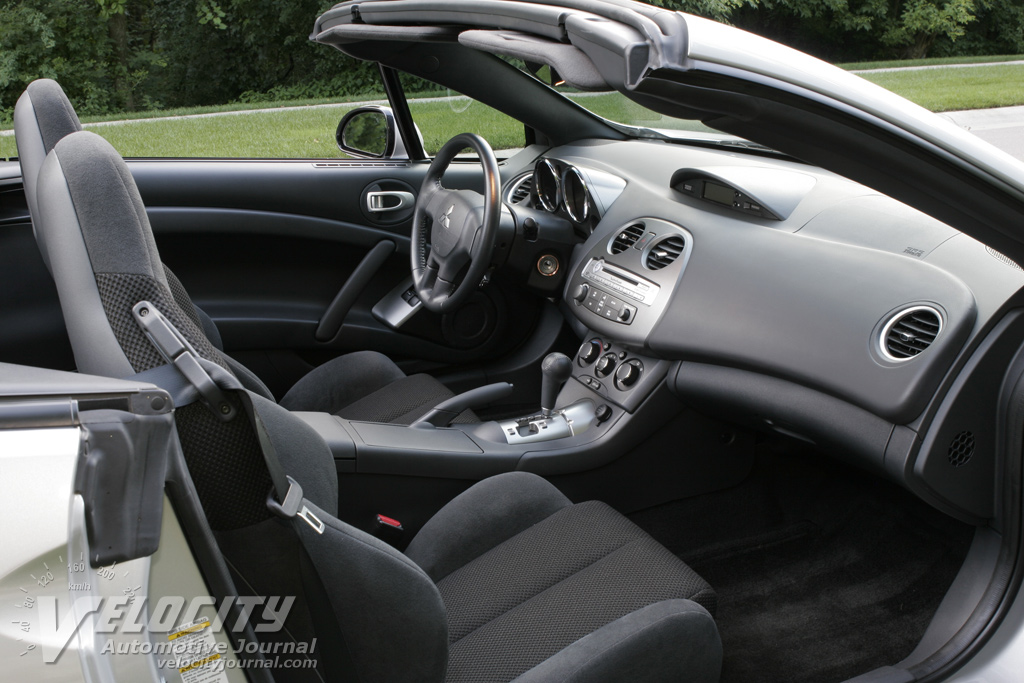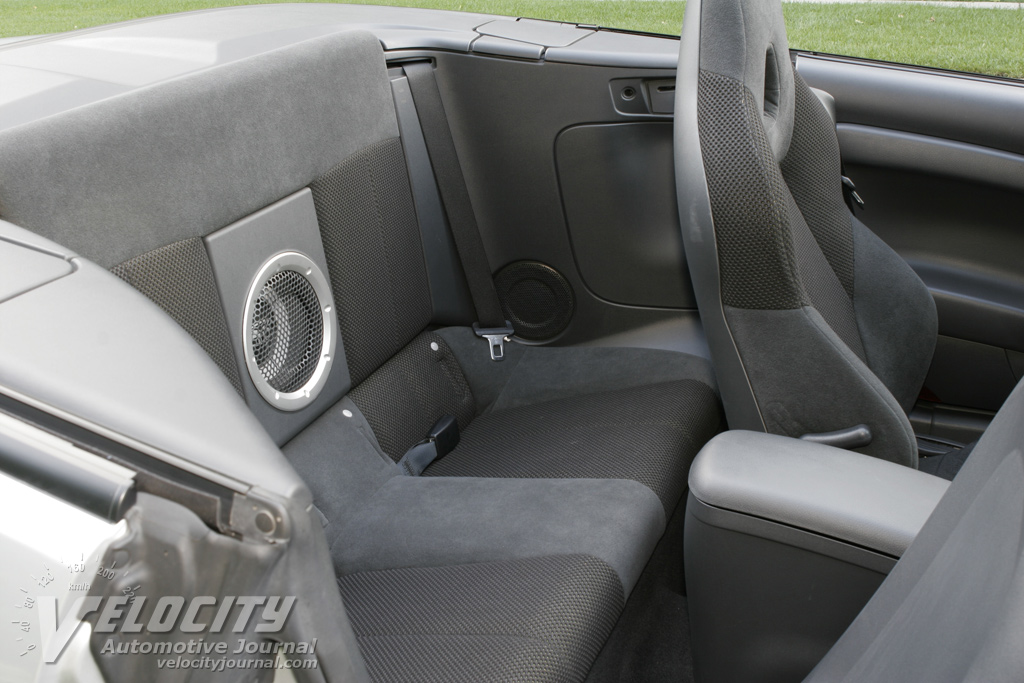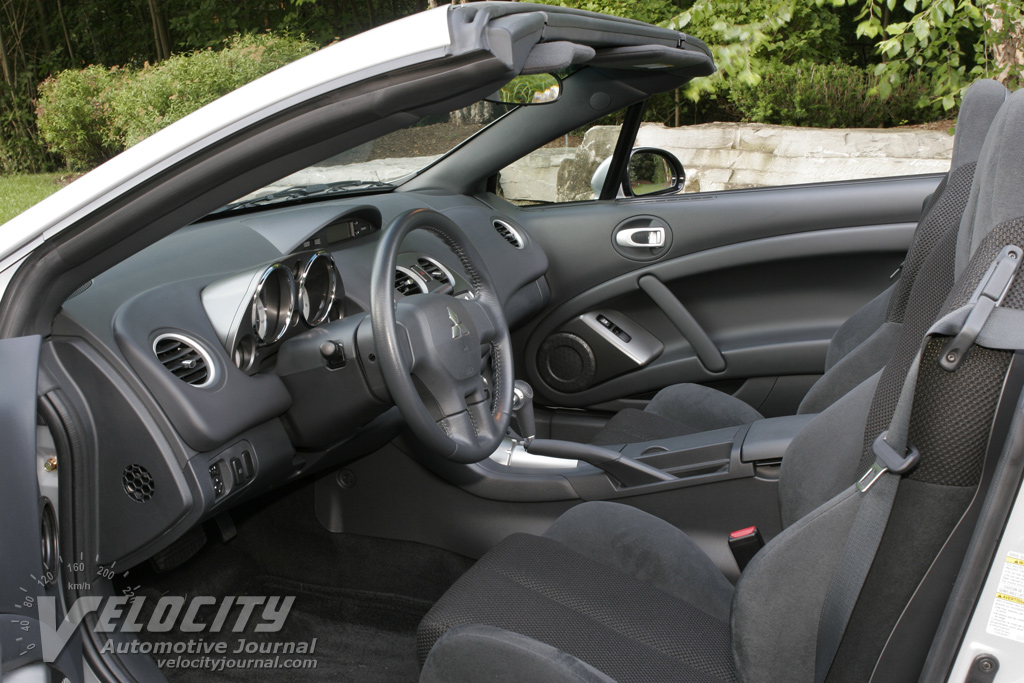2007 Mitsubishi Eclipse Spyder GS
07/20/2006
Shahed Hussain
Beginning with the 2nd generation Eclipse, a Spyder (convertible) model has been part of the Eclipse lineup. The Eclipse Spyder occupies a unique convertible niche, because it combines extroverted style with a wallet-friendly sticker price. The staid open-top versions of the Toyota Camry Solara and Chrysler Sebring don't really compete with the sporty Eclipse Spyder. Although the PT Cruiser or Mini Cooper convertible appears to be a viable alternative, put either next to this Mitsubishi, and the Eclipse Spyder wins on style points alone. The Mazda MX-5 and Pontiac Solstice/Saturn Sky are tougher competition, but lack rear seats for occasional passengers.
The new Eclipse draws upon its predecessors for inspiration, but with ample influences from the first-generation Audi TT, The front fascia is a fresh curvaceous design, and bears no resemblance to the more angular lines of the Galant or Endeavor. The sweeping headlight cluster merges into the front fenders. Round fog light flank the lower front fascia. Sporty 17-inch alloy wheels are shod with 225/50R-17 Bridgestone RE92A all-season tires. A small chromed spoiler sweeps across the curved tail to connect the flashy taillights, which resemble glowing red jet exhausts at night. The large single exhaust tip pokes through the lower rear fascia for the required tuner look.
Mitsubishi didn't forget about a stylish interior either. The dark gray dash with flowing curves is simultaneously attractive and sporty. A hooded central vehicle status display shows audio and climate control status. The driver faces a fat-rimmed leather covered steering wheel. Behind it are a chrome-ringed speedometer and tachometer illuminated in a cool blue, with glowing red dials. A round LCD display between the speedometer and tachometer shows the transmission shift mode. Round climate control knobs located below the audio system controls are also backlit in blue. The A/C knob color glows green when powered on. Since the Eclipse is based on the midsize Galant platform, the additional width allows a more spacious interior that feels less claustrophobic. Although the interior materials are generally of high quality, some of the hard plastics used on the upper door panels, center console, and glove box area are easily scuffed.
Nicely bolstered seats, covered in a grippy dark gray fabric, are very comfortable and have great support. Comprehensive 6-way manual seat controls, including height & lumbar adjustment, will allow most drivers to find a comfortable position. Heated leather seats are an available option for front seat passengers. The back seats, with their near vertical backrests and miniscule legroom are best suited for groceries or small luggage. The center console has dual cup holders and a convenient CD storage bin. Inside the bin is an additional 12V power outlet. The side windows drop slightly before the frameless doors close, and then rise up to seal securely against the door gasket in the fabric top. As expected, trunk space is minimal. A couple of small duffel bags will fit, or 3-4 grocery bags, but forget the golf clubs. Expect to use the rear seats to hold luggage that will not fit in the trunk.
For a convertible, the new power top is extremely easy to use. Just unhook two latches on the windshield header, press a button on the center console and the insulated fabric top automatically retracts under a hard plastic tonneau cover. The entire operation takes less than 15 seconds, but the transmission has to be in "Park" for the electric motors to do their magic. It's always fun to drop the top at a stoplight, while other motorists gawk enviously. With the top up, rear vision suffers due to the small oval glass backlight (with built-in defroster). Wind noise is minimal at speeds up to 80 mph, but becomes more noticeable as the speedometer heads towards triple digits. Even with the top retracted, the Spyder will cruise relatively quietly at 80-90 mph. As long as the windows are up, wind buffeting is surprisingly low, so passengers can converse normally.
Audiophiles will gravitate towards the optional Rockford Fosgate CD audio system (650-watts max.) that cranks out accurate and high volume sound. Audio controls are clearly marked and easily accessible on the upper dash. Output from the 8-inch subwoofer (mounted between the rear seats) is especially impressive, even with top retracted and the windows down. Although the 6-CD changer will play MP3 encoded discs, there is no auxiliary input for external MP3 players.
Mitsubishi offers a choice of a 162-bhp 2.4L inline-4, or a beefy 260-bhp 3.8L V-6. We tested a Spyder equipped with the 2.4L, and 4-speed Sportronic® automatic. This large displacement four is smooth, but is never eager to rev to its 6500 RPM redline. Above 5,000 RPM the 2.4L motor runs out of breath, but it never gets thrashy.
For the Eclipse GS coupe, the 2.4L and 5-speed manual is a reasonably lively match. However, the heavier Spyder GS is not so fortunate, because the optional 4-speed automatic sucks the life out of this engine. The Sportronic transmission shifts into 4th gear at the earliest opportunity, usually around 1,500 RPM, which causes an obnoxious engine drone as the engine struggles to maintain speed. Slip the leather-wrapped gear lever into manual mode, downshift into 3rd gear, and the drone disappears. Above 3,000 RPM in 4th gear, throttle response improves considerably. Of course, by that time the Eclipse is traveling over 80 mph.
Based on our experience with the 4-speed Sportronic, we would highly recommend sticking with the standard 5-speed manual. If you really need an automatic, then the 3.8L V-6 and 5-speed Sportronic in the Spyder GT is a better choice. Although the 5-speed Sportronic would increase the price slightly, Mitsubishi should seriously consider it as a replacement for the 4-speed automatic, which bogs down the 2.4L engine in the Spyder GS.
When equipped with the automatic, torque steer is nearly absent, although we suspect it will be more noticeable on manual transmission equipped Spyders. Brakes require moderate pedal effort, although the pedal feels slightly mushy at first. Standard ABS with EBD (Electronic Brake-force Distribution), coupled with 4-wheel disc brakes ensure confident stops on slick surfaces.
Steering effort at low speeds seems artificially heavy, although on the highway it lightens up considerably. Road textures are effectively filtered out, so the steering feels numb at all times. Chassis flex is most noticeable over railroad tracks and rippled road surfaces, but is well controlled in most conditions. Not surprisingly, suspension tuning is necessarily soft to keep body shivers in check. This convertible is best suited for relaxed cruising, not corner carving. For its intended customers, that is no insult.
Mitsubishi has recaptured the soul of the Eclipse with its striking new design. In the affordable convertible segment, the Eclipse Spyder GS should be popular with a wide variety of customers, ranging from buyers in their twenties to middle-aged couples looking for style in an affordable package. Enthusiasts may want to check out the Spyder GT, with its 260-bhp V-6 and standard 6-speed manual. To its credit, Mitsubishi priced all Eclipse Spyder models under $30K, which makes it arguably the best combination of style and value in its segment.

